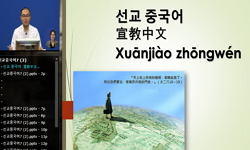본 논문은 중국의 지역별 인적자본의 추계와 비교를 목적으로 하고 있다. 인적자본의 추계는 교육연한법을 이용하고 있다. 이는 교육 기간에 따라 인적자본의 스톡이 증가한다는 것을 가정...
http://chineseinput.net/에서 pinyin(병음)방식으로 중국어를 변환할 수 있습니다.
변환된 중국어를 복사하여 사용하시면 됩니다.
- 中文 을 입력하시려면 zhongwen을 입력하시고 space를누르시면됩니다.
- 北京 을 입력하시려면 beijing을 입력하시고 space를 누르시면 됩니다.

Estimation and comparison of human capital in China regions = Estimation and comparison of human capital in China regions
한글로보기https://www.riss.kr/link?id=A108928166
- 저자
- 발행기관
- 학술지명
- 권호사항
-
발행연도
2023
-
작성언어
-
-
주제어
중국 ; 인적자본 ; 교육연한법 ; 교육수준 ; 지역경제발전 ; China ; Human capital ; Education years method ; Education level ; Regional economic development
-
KDC
300
-
등재정보
KCI등재
-
자료형태
학술저널
- 발행기관 URL
-
수록면
25-49(25쪽)
- 제공처
-
0
상세조회 -
0
다운로드
부가정보
국문 초록 (Abstract)
본 논문은 중국의 지역별 인적자본의 추계와 비교를 목적으로 하고 있다. 인적자본의 추계는 교육연한법을 이용하고 있다. 이는 교육 기간에 따라 인적자본의 스톡이 증가한다는 것을 가정하고 있다. 본 논문에서의 교육은 초등학교, 중학교, 고등학교, 전문대학 이상을 포함하고 있다. 초등학교의 교육연한은 6년, 중학교는 3년, 고등학교는 3년 그리고 전문대학 이상은 4년으로 설정하고 있다. 본 연구는 1998-2021년의 중국의 31개 지역별 자료를 이용하고 있다. 본 연구의 분석결과는 세 가지로 요약할 수 있다. 첫째는 국가 수준에서 1998년부터 2021년 기간 동안 중국의 인적자본은 매년 증가하고 있다. 이는 중국의 전반적인 교육 수준이 높아지고 있음을 의미한다. 둘째는 31개 지역별 인적자본의 추계 결과에 의하면 인적자본의 크기와 지역경제발전과는 일정한 관계가 있다. 즉 인적자본의 크기가 클수록 지역경제발전 수준이 상대적으로 높다. 셋째는 4대 지역의 비교에 의하면 여전히 지역별 격차가 존재하고 있다.
다국어 초록 (Multilingual Abstract)
This paper focuses on the estimation and comparison of human capital in various regions in China. At the regional level, China’s human capital is divided into four regions to compare the development of human capital among different regions using the...
This paper focuses on the estimation and comparison of human capital in various regions in China. At the regional level, China’s human capital is divided into four regions to compare the development of human capital among different regions using the education years method. This paper first presents a comparison of the number educated population in 31 regions in China, and infers the education level of each regions based on the number of educated population. The next step is to use the education years method to calculate the human capital situation of each regions and compare the differences in human capital through the education level between different regions. This paper uses data from 1998 to 2021. The number of students with primary school, junior school, senior high school, college and above education in the population is used as the calculation indicator. The empirical analysis results found that there are different impacts in different regions and periods. At the regional level, the human capital stock in the Eastern region of China is the highest. Although there has been growth in the Western region, the population with bachelor’s degree or above is relatively small, indicating a lack of high-level talents in the Western region, and then low stock of human capital. In this paper, although there is a gap in human capital between regions in China and an imbalance in education levels, it is much less than before. The analysis shows that sustained investment in education is needed. In other words, in order to increase China’s human capital, more investment in education and better quality education policies in addition to material investment are needed.
동일학술지(권/호) 다른 논문
-
Rethinking of the Adam Smith Problem and Impartial Spectator
- 한국비교경제학회
- 이상빈 ( Lee Sangbin )
- 2023
- KCI등재
-
- 한국비교경제학회
- 김형준 ( Kim Hyung Jun )
- 2023
- KCI등재
-
COVID-19 시대의 장기금리와 주가간의 관계 재고찰
- 한국비교경제학회
- ( Jong-min Kim )
- 2023
- KCI등재
-
쿼드러플 헬릭스 기반 지역 콘텐츠산업 생태계 혁신전략 구축에 관한 연구: 경남 콘텐츠 산업 생태계를 중심으로
- 한국비교경제학회
- 이진희 ( Lee Jinhee )
- 2023
- KCI등재




 KISS
KISS






